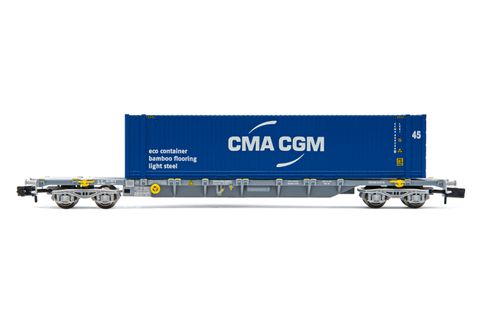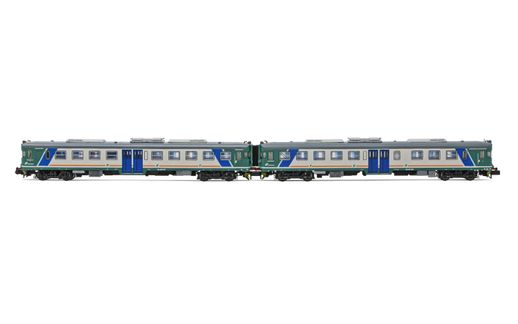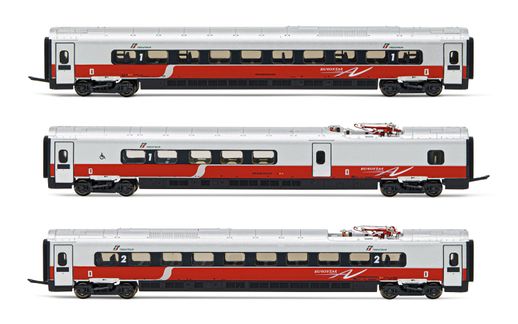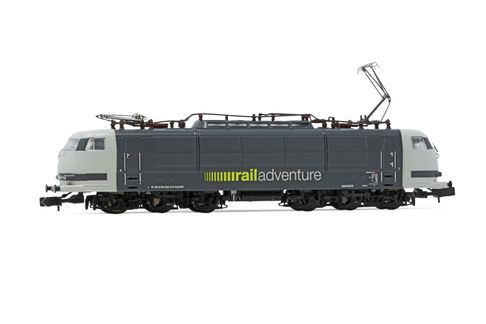Arnold Through the Ages
Browse our selection of products, curated just for you into specific time periods.
Travel through history with Arnold.
Arnold is a toy manufacturing company founded in Nuremberg on 4 October 1906 by Karl Arnold. Specialising in tin toys, it also produced boats and doll's houses until the Second World War, when the factory was completely destroyed.
It is best known for launching the Arnold Rapido model train range in 1962 in the 1:160 scale with a track gauge of 9 mm: this was the birth of the N scale.
From 1960 to 1962, production consisted of a range of small "Rapido 200" trains, in 1:200 scale, more toy train than model train.
However, from 1962, the company turned to the production of real model trains and became the reference N production from 1970 onwards. In 1964, the N scale was recognised as the NEM standard and later the "Rapido coupler" was adopted as the European standard for the scale.
In 1995 the firm was bought by Rivarossi and in 2004 by Hornby PLC.
The Beginning
The Middle
There are six main Epochs for European railways, although as with most time periods, there is no hard and fast rule that every model must belong to a definitive era. Each Epoch is preceeded by a Roman Numeral to split them into six. Again, it’s impossible to truly capture every single nuance as each country developed slightly differently to fit their particular set of circumstances. More information will soon be available, if you are interested in how each country progressed and the impact this had on their railways. We have also included dates on the end of each title to help give you an idea of the time period being referenced, but these will differ country to country. For the time being, this is the standard historical guide to European railways.
We, as manufacturers of model railway materials and accessories, try to ensure with every model and accessory that they are as authentic to either their real life counterpart, or to the time period we have categorised them in. We hope that this easy guide will assist you in creating an authentic European diorama, right at home in the era of your choice.
Each year we band together as a team to create our long awaited catalogue. Our aim is to showcase the coming year's exciting selection of new products for our International family to revel in just as they launch. However, we also tend to do a large amount of reflecting within the pages, mulling over the last year with each other and all of you. As much as it's a celebration in it's own right to have had another merry trip around the sun, some years more than others, we are reminded of just how important it is to shed one's skin in aid of new beginnings (or new ranges).
With each new catalogue, comes a new year, a new us, and a new you. We hope to spend many more years growing, diversifying, expanding and thriving, with all of you by our side. We are very grateful for your continued support and look forward to hearing your thoughts on our latest catalogue!
For all publication and catalogue needs and necessities, please continue to check back for updates.
The End (For Now)
Epoch I
1848 – 1920 was the definitive period for the birth of the European railway system.
Epoch II
By 1921 – 1948, construction and operating regulations had unified to create more progressive railways and systems than ever before. Electric traction was introduced, culminating in electric locomotives.
Epoch III
With Europe still recovering from the effects of the Second World War, 1949 – 1970 was a period of reinvention.




Epoch IV
By 1971 – 1990, the traction system across Europe was looking very similar to what we use now.

Epoch V
The period of 1991 – 2006 was one of freeing up the railways. Liberalised access to the railway networks was put into action in the early 2000’s across a select few European countries.
Epoch VI
2007 – Present has been a time of building upon all of the progress that has been made over the last century.
European Epoch System
There are six main Epochs for European railways, although as with most time periods, there is no hard and fast rule that every model must belong to a definitive era. Each Epoch is preceeded by a Roman Numeral to split them into six. Again, it’s impossible to truly capture every single nuance as each country developed slightly differently to fit their particular set of circumstances. More information will soon be available, if you are interested in how each country progressed and the impact this had on their railways. We have also included dates on the end of each title to help give you an idea of the time period being referenced, but these will differ country to country. For the time being, this is the standard historical guide to European railways.
We, as manufacturers of model railway materials and accessories, try to ensure with every model and accessory that they are as authentic to either their real life counterpart, or to the time period we have categorised them in. We hope that this easy guide will assist you in creating an authentic European diorama, right at home in the era of your choice.

















